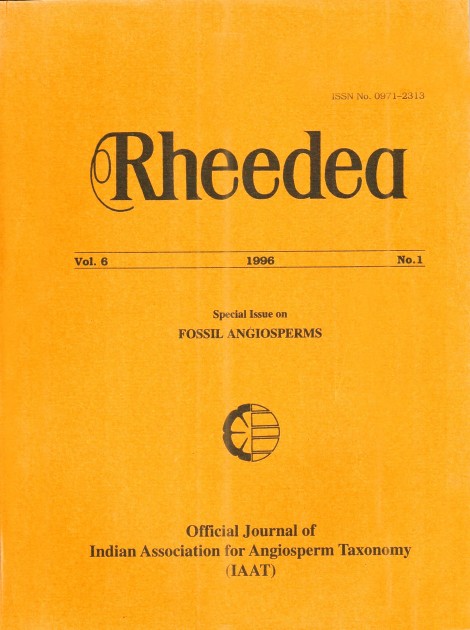Floristic diversity in the Neogene and Modern forests of Pondicherry - Neyveli area of Tamil Nadu - its impact on climatic and phytogeographic aspects
Ramanujam C.G.K.
Published on : 01-Jan-2022
DOI : https://dx.doi.org/10.22244/rheedea.1996.06.01.03
DownloadAbstract
The Neogene plant fossil (mega and micro) preserved abundantly in the sandstones around Pondicherry and the lignite deposits near Neyveli in the Cauvery basin of Tamil Nadu have been extensively studied over the last three decades. On the whole, l08 genera referable to 53 families of Angiosperms could be recognised in the Neogene flora of this region. Arecaceae is the predominant monocot family. Anacardiaceae, Barringtoniaceae, Clusiaceae, Combretaceae, Dipterocarpaceae and Fabaceae are numerically better represented among the dicots. The totality of the Neogene floral spectrum reveals the occurrence of discrete pockets of estaurine swamps at the coast line and tropical moist evergreen forest away from the coastal belt. As against the tropical wet evergreen Neogene vegetational type, the present day Pondicherry-Neyveli area shows only few strands of vegetation consisting of scrubwoodlands or the so-called dry evergreen forests. The probable reasons for this dramatic change in the climate and vegetational types in the Neogene vis a vis the present day, along with the phytogeographic significance of some taxa are highlighted.
